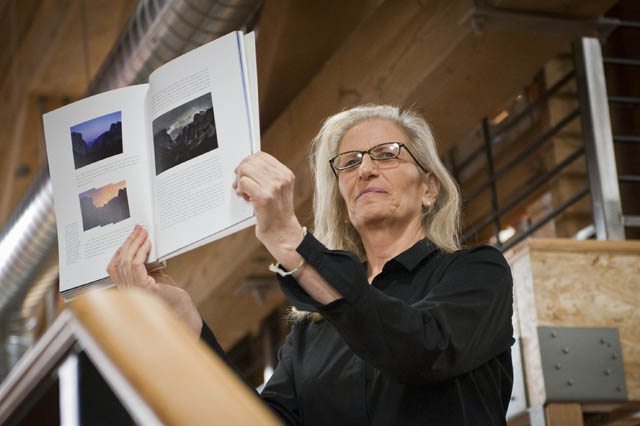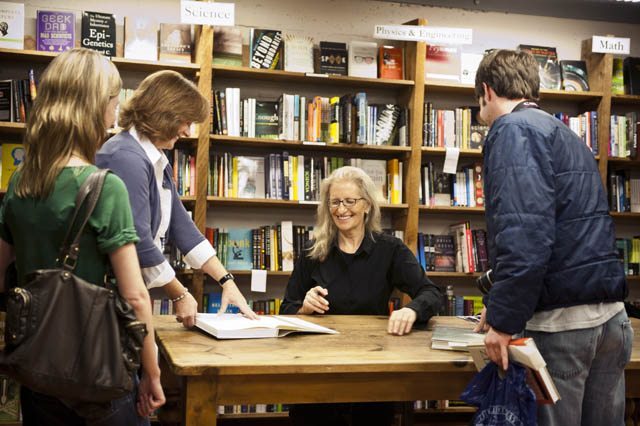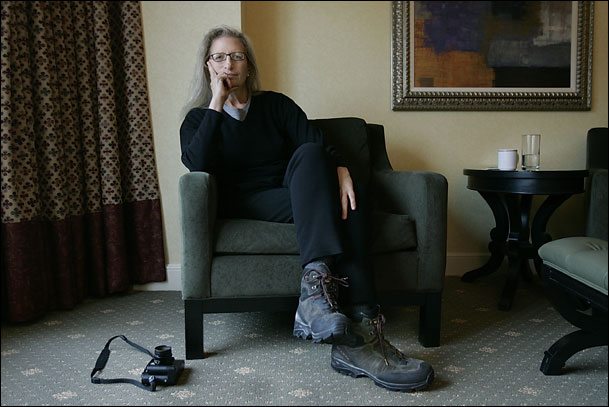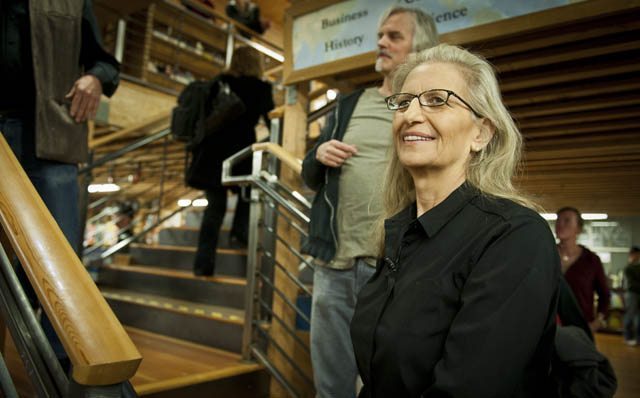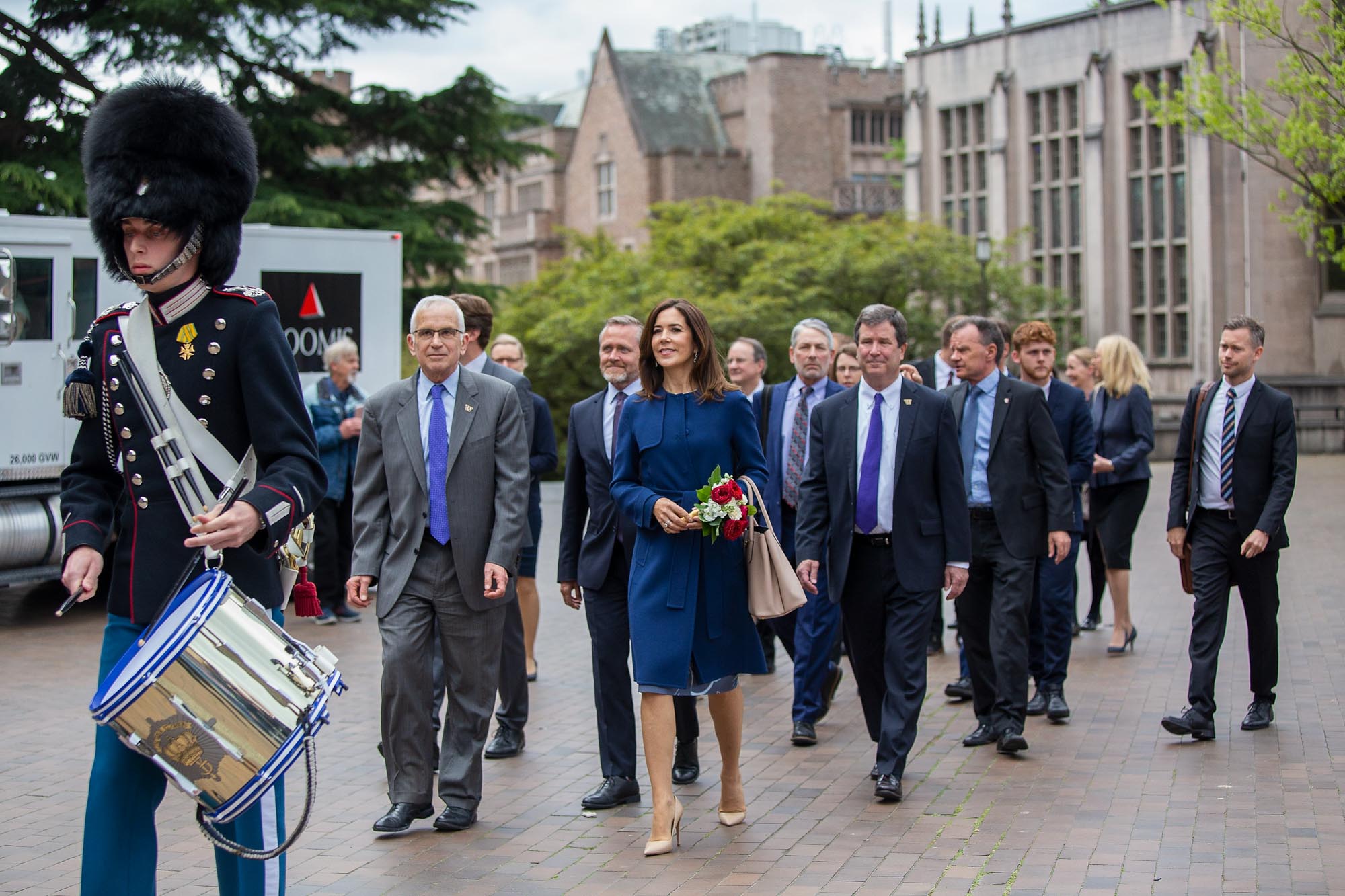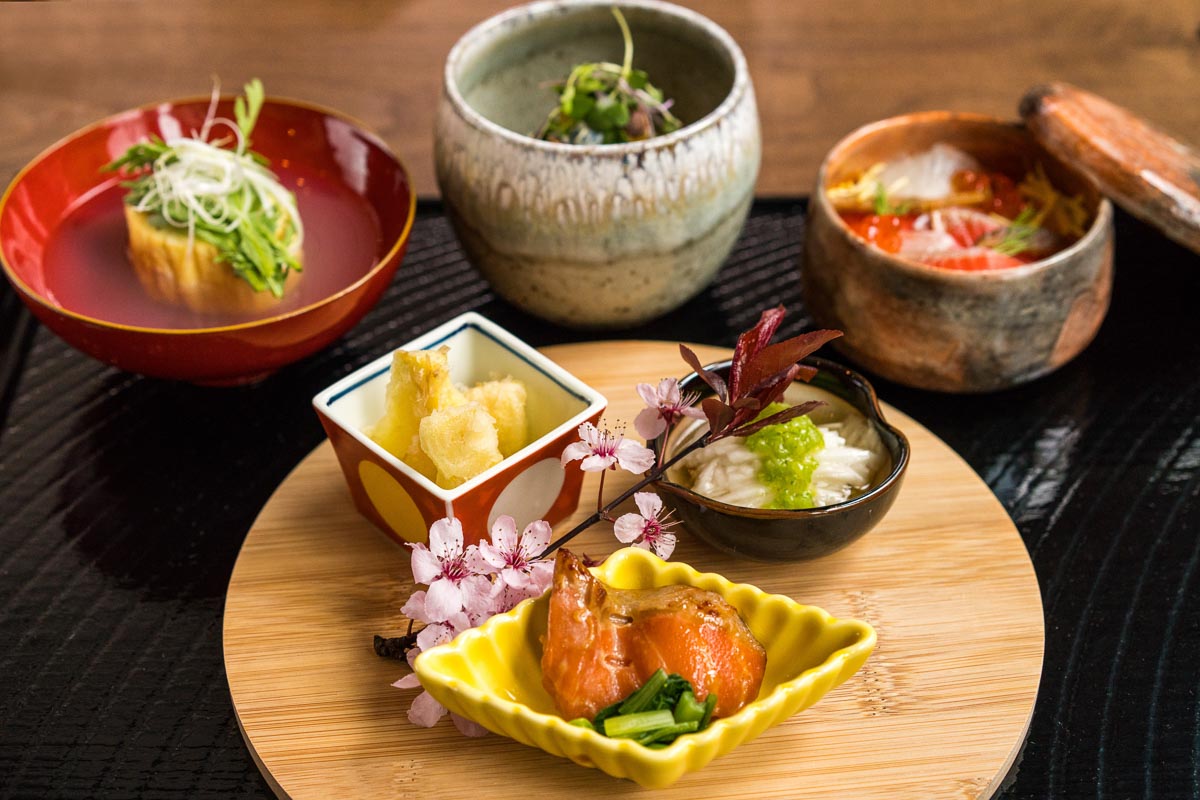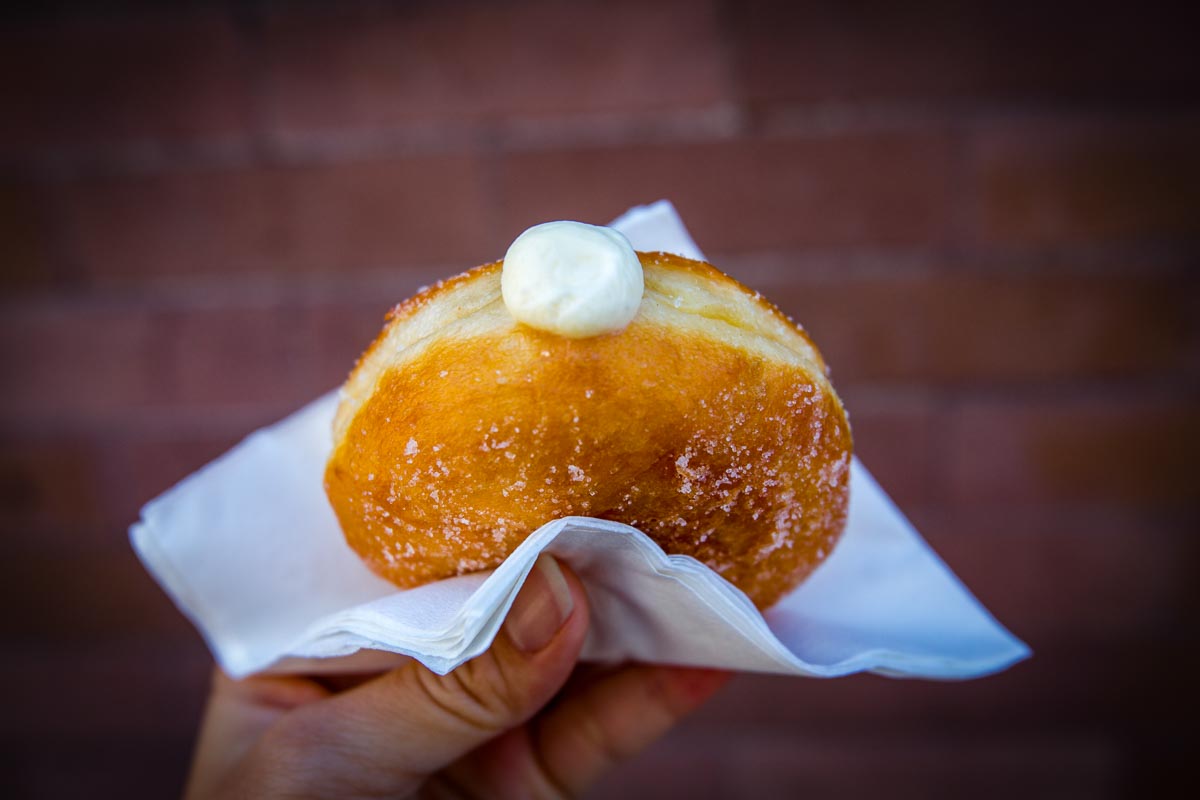Meeting one of your idols is a rare and special occasion that is undoubtedly marked by at least one embarrassing foot-in-mouth moment. In the case of every personal idol I’ve met, I usually suffer from a severe lack of words, leaving me dumbfounded and mute as every burning question and compliment I’ve ever had for that person suddenly evaporates from my mind. Meeting legendary photographer Annie Leibovitz at Elliott Bay Books in Seattle last night proved to be no exception, and my dumbfounded muteness set in almost immediately as she was right in front of me, signing my copy of her newest book Pilgrimage.
Up until that point, the evening went superbly well. Leibovitz dropped into Seattle on seemingly short notice, as the turn out was decent, but lacking a bunch of faces I was sure would be there. It was a low key event (all things considered), which featured Leibovitz giving a few readings from her new book and answering audience questions, followed by a book signing. As happy as I am that I now have Leibovitz’s autograph, I was more impressed by her “on-stage” persona. When she first took the stage, I was surprised not only by her height, but what she was wearing on her feet. I had expected to see her donning a pair of power pumps, or perhaps some simple yet sleek boots. Instead, she had on a pair of rugged-looking hiking boots. To me, this spoke volumes about her personality, which was confirmed as she began her speech in a very casual yet down to earth form.
Pilgrimage is a seeming departure from Leibovitz’s best known work as a celebrity portrait and advertising photographer. Instead of dazzling images featuring famous faces, this body of work focuses on snapshots of historical places and artifacts related to historical figures, or celebrities of a different time period, if you may. As Leibovitz explains in the opening passage of Pilgrimage, this entire project was conceived of on her own. It wasn’t an assignment, and therefore, she was able to approach it freely without the restrictions or standards of others. To me, this represents some of Leibovitz’s purest work since every aspect of it came entirely from her. Another thing that impressed me was something she said early in her talk: she believed her prior experiences prepared her to fully appreciate the subjects she broaches in Pilgrimage, making it an appropriate project for her in her later stage of life. It makes complete sense–if you visited any of these historic sites such as Walden Pond or Mount Vernon as a child, they have much less significance to you than if you returned to them decades older and wiser. This assertion spoke volumes about Leibovitz’s realization that even professionals must find a way to stay relevant or continue working in their field as they get older.
When I first bought Pilgrimage a few days earlier, I was at first skeptical by its textbook-like appearance. However, once I dove into the first few pages, I found myself absorbed in its contents, and within a few hours’ time, I had finished reading the entire book. That’s right, I actually read a photography book. I’ll admit it’s the first photography book I didn’t just skim through for the photos, and perhaps it was the seeming plainness of the images in comparison to Leibovitz’s previous work that made me want to read the accompanying text. I wanted to know, for instance, why of all things associated with Abraham Lincoln, Leibovitz chose to photograph a pair of his gloves. Only by reading her words do you understand that these raggedy gloves were the ones Lincoln had in his pocket the day he was shot. It was realizations such as this that made me intrigued to read on. Not to mention, Leibovitz’s writing voice flows well, revealing not only historical facts, but a lot of her personality and approach to photography. Ther extensive knowledge of her subjects that she shares in the pages showes her dedication to learning all she could about them before taking a single snapshot. If you didn’t read her words, you’d never know how much effort went into composing and capturing one perfect image.
Pilgrimage is a lovely read, full of timeless American images very important to our nation’s history. As Leibovitz mentioned in her talk, the true quality of her photos did not translate as well to the printed book, which I have to agree with. On the other hand, she mentioned that the Smithsonian would be touring a gallery of these images around the United States next year, so hopefully we will get to experience them in a museum setting.
Purchase Leibovitz’s new book on Amazon using the link to the left to help support my site and allow me to keep supplying great posts and images for free!
More photos of Leibovitz in Seattle located here.
Suzi Pratt is a Seattle event, food, and travel photographer available for hire. She is also a contributing writer at Digital Photography School and runs a blog teaching others how to start a photography business.

